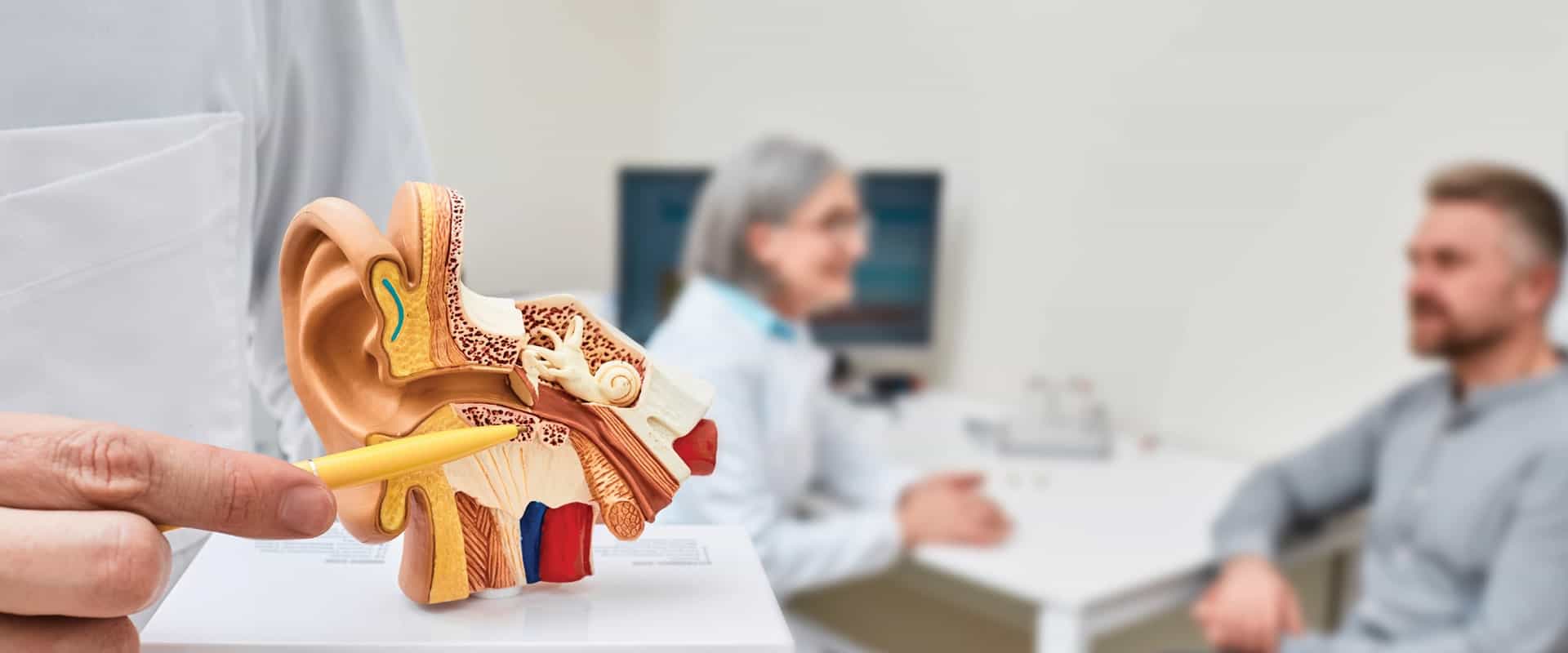By Anna Marie Jilla
This article is a part of the September/October 2021, Volume 33, Number 5, Audiology Today issue.
Please note that telehealth guidelines and policies related to the COVID-19 pandemic continue to evolve on multiple policy fronts but, unfortunately, some states are beginning to restrict telehealth provisions as COVID-19 emergency declarations are phased out. Some information in this article may have changed since the article was submitted for publication. It is recommended that clinicians reference primary sources of information (e.g., government or payer guidance) whenever possible.
The need for telehealth options for audiological care was already apparent prior to the COVID-19 pandemic. Increased use of telehealth as a mode of service provision has been necessary to provide timely access to care.
In May 2020, cochlear implant programming procedure codes were added to the Medicare code list for services eligible to be provided remotely (Chakrabarty et al, 2020). Multiple organizations, including the American Academy of Audiology, have advocated for the addition of other services to be reimbursed when provided remotely.
On March 30, 2021, the Centers for Medicare and Medicaid Services (CMS) released a new list of services eligible for telehealth. These additions have not changed the list of Medicare-covered services, but have added certain covered services to be reimbursable through Medicare when provided via telehealth (CMS, 2021). The purpose of this review is to discuss relevant topics in telehealth coding and billing that providers may encounter in the course of practice.
Telehealth Sites
There are two distinct sites in the provision of telehealth:
- Originating site—This is the site from which the patient is requesting services. The patient’s location may be indicated on the claim form at their physical address.
- Distant site—This is the site from which the practitioner is providing services. The practitioner’s location is indicated by place-of-service (POS) codes.
State Regulation
Practitioners providing services via telehealth should be familiar with the originating site’s state law and regulatory policy on the provision of telehealth services. Practitioners should be licensed in the originating site’s state when providing telehealth services.
Efforts are underway to implement the Audiology and Speech-Language Pathology Interstate Compact (ASLP-IC, 2021) to reduce regulatory burden and increase uniformity of licensure, facilitating timely access to care across state lines. The ASLP-IC has support from the requisite minimum of the 10 member states needed to establish a rules committee. At the time of this writing, additional states continue to join the compact and rules are forthcoming.
Types of Telehealth Services
Telehealth services in health care span several types of technology, including:
- Telephone calls (synchronous)
- Digital, real-time audio and video calls (synchronous)
- Digital, store-and-forward audio and/or video calls (asynchronous)
Technological Requirements
New Medicare expansions for audiology services require use of HIPAA-compliant, real-time audio and video conferencing (HHS, 2021a and 2021b). Other technology, such as telephone and store-and-forward, are not payable by Medicare when used for covered services provided via telehealth, but may be covered by other payers under certain circumstances. Practitioners should reference payer-specific telehealth guidance to determine to which technology telehealth coverage has been extended.
Place-of-Service (POS) Codes
- POS Code 11—Office is the primary POS code used for typical face-to-face procedures provided by audiologists. Current convention is to report Code 11 when providing telehealth services to assure similar rates to in-person services. Payers may also require a modifier to be added to the procedure code (see next section, Telehealth Modifiers).
- POS Code 02—Telehealth is a POS code used to indicate services provided through a telecommunications system. We do not recommend reporting the POS Code 02. Instead, Medicare asks practitioners to report the POS Code 11—Office and append the -95 (Telehealth) modifier to current procedural terminology (CPT) codes representing the remote services performed. However, other payer-specific policies may recommend the use of POS Code 02.
Telehealth Modifiers
Certain payers may require practitioners to append modifiers when reporting clinical services provided via telehealth.
- Modifier -95
- This modifier indicates that services were provided synchronously (in real time) over a HIPAA-compliant communication technology. The modifier is commonly used by Medicare alongside POS Code 11 for reporting clinical procedures performed via synchronous telehealth.
- Modifier -GT
- This modifier indicates that services were provided synchronously (in real time) over a HIPAA-compliant communication technology. Medicare no longer uses this modifier to indicate telehealth services, but some payers may ask for reporting of this modifier in lieu of the modifier -95.
- Modifier -GQ
- This telehealth modifier may be used by specific payers under certain circumstances. Required usage of this modifier has become rare in recent years, as reporting conventions have evolved.
Codes Added to Covered Telehealth Services: Medicare
TABLE 1 presents a list of audiology services payable through Medicare when provided via telehealth. When reporting these codes to Medicare, the POS Code 11—Office should be used with the modifier –95 to indicate provision via telehealth.
| CODE | DESCRIPTOR |
| 92550 | Tympanometry and reflex threshold |
| 92552 | Pure-tone audiometry air |
| 92553 | Pure-tone audiometry air and bone |
| 92555 | Speech audiometry threshold |
| 92556 | Speech audiometry threshold with speech recognition |
| 92557 | Comprehensive hearing test |
| 92563 | Tone-decay hearing test |
| 92565 | Stenger test pure tone |
| 92567 | Tympanometry |
| 92568 | Acoustic reflex testing, threshold |
| 92570 | Acoustic immittance testing (tympanometry, acoustic reflex threshold, and acoustic reflex decay testing |
| 92587 | Evoked auditory test limited |
| 92601 | Diagnostic analysis of cochlear implant, patient <7y, initial programming |
| 92602 | Diagnostic analysis of cochlear implant, patient <7y, subsequent reprogramming |
| 92603 | Diagnostic analysis of cochlear implant, patient ≥7y, initial programming |
| 92604 | Diagnostic analysis of cochlear implant, patient ≥7y, subsequent reprogramming |
| 92625 | Tinnitus assessment (includes pitch, loudness matching, and masking) |
| 92626 | Evaluation of auditory function for cochlear implant candidacy or postoperative status of a surgically implanted device(s); first hour |
| 92627 | Evaluation of auditory function for cochlear implant candidacy or postoperative status of a surgically implanted device(s); each additional 15 minutes |
|
EFFECTIVE: March 30, 2021 STATUS: Temporary addition for the public health emergency (PHE) for the COVID-19 pandemic. Not proposed for extension beyond the declaration of the PHE (per publication of the proposed rule on the CY 2022 Medicare Physician Fee Schedule). When reporting these codes to Medicare, the POS Code 11—Office should be used with the modifier –95 to indicate provision via telehealth. |
|
Self-Pay
When insurance does not provide coverage for certain services when provided via telehealth, practitioners are able to seek reimbursement directly from the patient.
Practitioners should:
- Establish a fee schedule for telehealth services offered and
- Use transparency in billing patients for services provided.
Telehealth Audits
Practitioners should comply with all requirements for the provision of telehealth services. The increased adoption of telehealth services means the Department of Health and Human Services (HHS) Office of Inspector General (OIG) has increased its review of telehealth services provided under the Medicare and Medicaid programs. In addition, primary resources and guidance regarding HIPAA compliance can be found on federal government websites (HHS, 2021a and 2021b).
Please contact the Academy’s Coding and Reimbursement Mailbox (reimbursement@audiology.org) with questions regarding the provision of services by telehealth.
*CPT codes, descriptions, and other data are copyright 1966, 1970, 1973, 1977, 1981, 1983–2021 American Medical Association. All rights reserved. CPT is a registered trademark of the American Medical Association.
| DISCLAIMER |
| The information provided in this article by the American Academy of Audiology Coding and Reimbursement Committee is to provide general information and educational guidance to audiologists. Action taken with respect to the information provided is an individual choice. The American Academy of Audiology hereby disclaims any responsibility for the consequences of any action(s) taken by any individual(s) as a result of using the information provided, and the reader agrees not to take action against, or seek to hold, or hold liable, the American Academy of Audiology for the reader’s use of the information provided. As used herein, the “American Academy of Audiology” shall be defined to include the Academy’s directors, officers, employees, volunteers, members, and agents. |
References
Audiology and Speech-Language Pathology Interstate Compact (ASLP-IC). (2021) https://aslpcompact.com (accessed July 15, 2021).
Centers for Medicare and Medicaid Services (CMS). (2021) Audiology Codes List. www.cms.gov/Medicare/Billing/TherapyServices/Downloads/Audiology_Codes.pdf (accessed July 15, 2021).
Chakrabarty S, Jilla A, Miller E. (2020) Specialty Series: Telehealth. Audiol Today 32(5):56–62.
Department of Health and Human Services (HHS). (2021a) HIPAA and COVID-19. www.hhs.gov/hipaa/for-professionals/special-topics/hipaa-covid19/index.html (accessed July 15, 2021).
Department of Health and Human Services (HHS) (2021b) HIPAA Administrative Simplification Regulation Text 45 CFR Parts 160, 162, and 164. www.hhs.gov/sites/default/files/ocr/privacy/hipaa/administrative/combined/hipaa-simplification-201303.pdf?language=es (accessed March 12, 2021).


